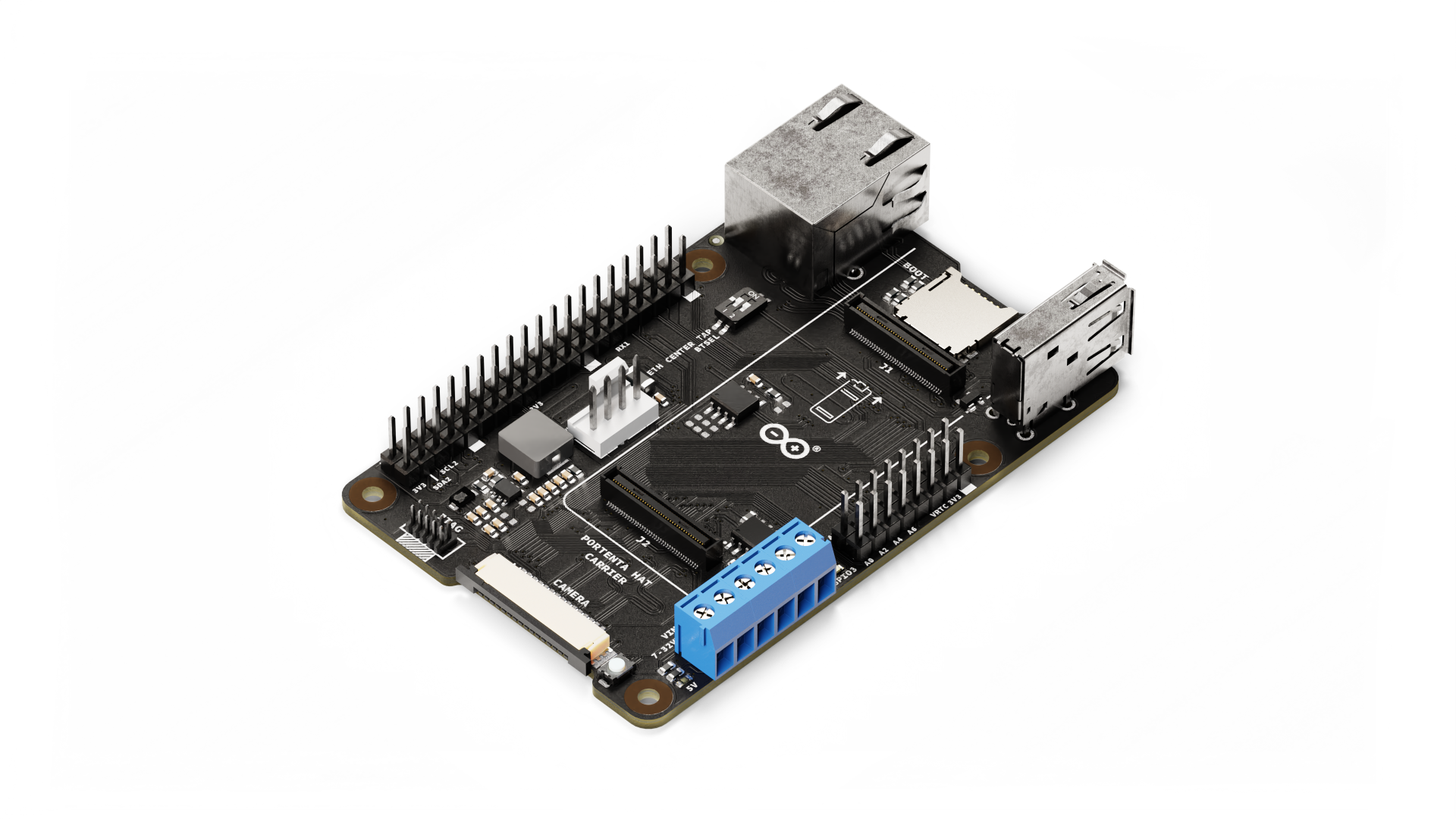
Overview
Portenta Hat Carrier is a reliable and robust carrier that transforms Portenta X8 into an industrial single board computer compatible with Raspberry Pi® Hats and cameras. Ready for multiple industrial applications such as building automation and machine monitoring.
Compatible also with Portenta H7 and Portenta C33, Portenta Hat Carrier provides easy access to multiple peripherals – including CAN, Ethernet, microSD and USB – and further extends any Portenta application.
Great for prototyping and ready for scaling up, it extends the features found on a typical Raspberry Pi® Model B. Debug quickly with dedicated JTAG pins and keeps heat manageable under intense workloads with a PWM fan connector. Control actuators or read analog sensors via the additional 16x analog I/Os. Add industrial machine vision solutions to any project by leveraging the onboard camera connector.
Key benefits include:
- Add Raspberry Pi® Hats to your Portenta projects
- Quickly access CAN, USB, and Ethernet peripherals
- Leverage onboard MicroSD card to log data
- Enjoy simple debugging through the onboard JTAG pins
- Easily control actuators and read sensors via 16x analog I/Os
- Leveraging the onboard camera connector for machine vision
- Discover a great prototyping tool for scalable Portenta applications!
Portenta takes you from prototype to high-performance
Portenta Hat Carrier offers you a frictionless Linux prototyping experience and unlocks the ability for integrated real-time MCU solutions. Portenta Hat Carrier extends Portenta SOMs for faster, easier and more efficient testing for your ideas while also ensuring the capabilities and industrial-grade performances the Portenta range is known for. Reliable, accessible and open to infinite combinations with add-ons from both the Arduino and Raspberry Pi® ecosystems, it’s the carrier that will carry you away with its flexibility.
Extend the Raspberry Pi® ecosystem for commercial applications
Combine the ease of use, accessibility and incredible support from both the Arduino and Raspberry Pi® communities for your next project with the carrier designed to combine and extend MPU and MCU applications for the development of advanced commercial solutions.

Getting Started
Find inspiration for your projects with the Portenta Hat Carrier from our tutorial platform Project Hub.
You can find in the Getting Started with the Portenta Hat Carrier section all the information you need to configure your board, use the Arduino Software (IDE), and start tinkering with coding and electronics.
Need Help?
Check the Arduino Forum for questions about the Arduino Language or how to make your own Projects with Arduino. If you need any help with your product, please contact the official Arduino User Support through our Contact us page.
Warranty
You can find your product warranty information here.
Tech specs
| Connectors |
|
| Interfaces |
|
| Operating temperatures | -40° C to +85° C (-40° F to 185 °F) |
| Dimensions | 85 mm x 56 mm (3.35 in x 2.6 in) |
| Debugging | Onboard 10x pin 1.27mm JTAG connector |
| Power |
|
Resources for Safety and Products
Manufacturer Information
The production information includes the address and related details of the product manufacturer.
Arduino S.r.l.
Via Andrea Appiani, 25
Monza, MB, IT, 20900
https://www.arduino.cc/
Responsible Person in the EU
An EU-based economic operator who ensures the product's compliance with the required regulations.
Arduino S.r.l.
Via Andrea Appiani, 25
Monza, MB, IT, 20900
Phone: +39 0113157477
Email: support@arduino.cc










